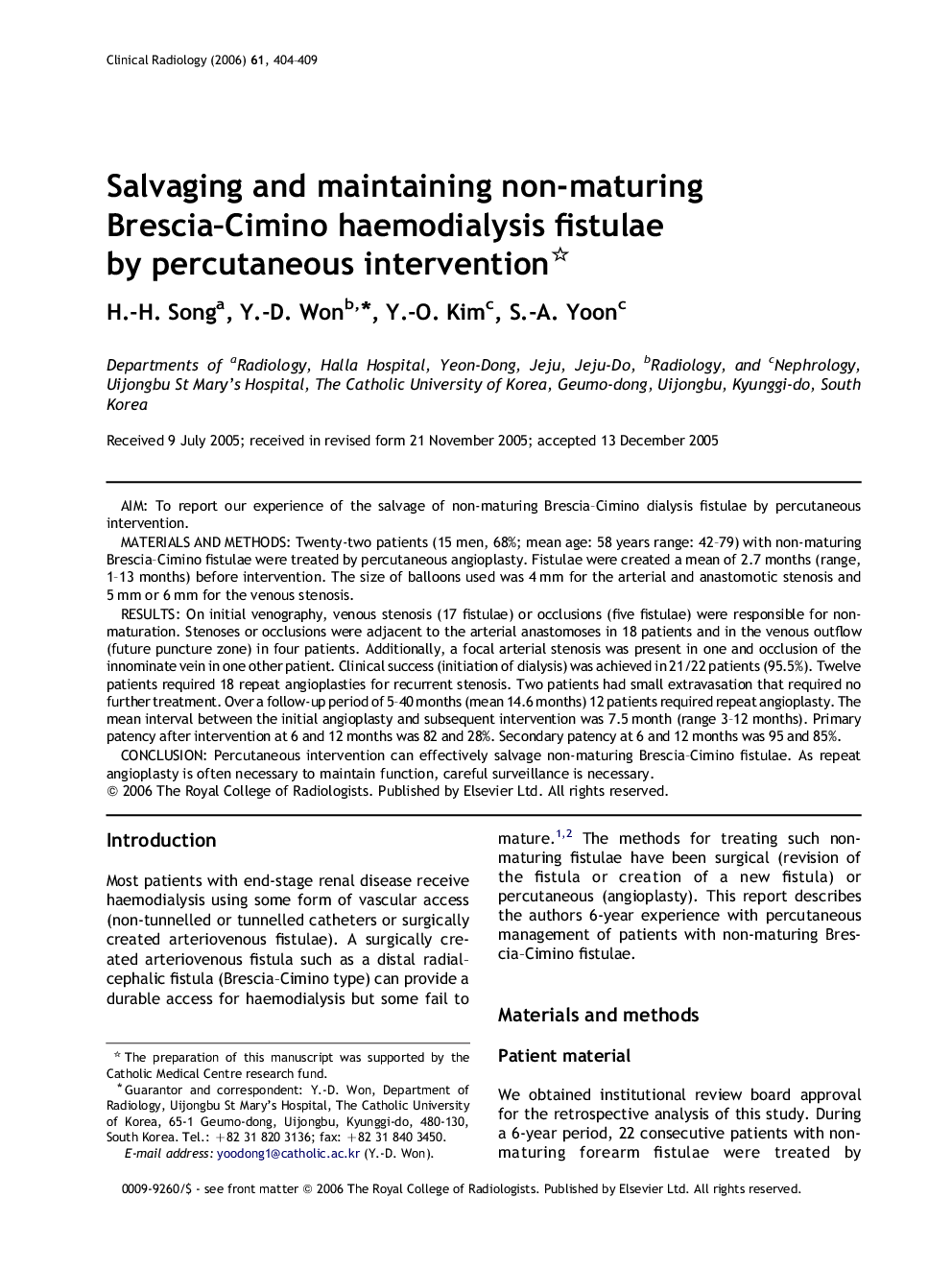| Article ID | Journal | Published Year | Pages | File Type |
|---|---|---|---|---|
| 3983823 | Clinical Radiology | 2006 | 6 Pages |
AIMTo report our experience of the salvage of non-maturing Brescia–Cimino dialysis fistulae by percutaneous intervention.MATERIALS AND METHODSTwenty-two patients (15 men, 68%; mean age: 58 years range: 42–79) with non-maturing Brescia–Cimino fistulae were treated by percutaneous angioplasty. Fistulae were created a mean of 2.7 months (range, 1–13 months) before intervention. The size of balloons used was 4 mm for the arterial and anastomotic stenosis and 5 mm or 6 mm for the venous stenosis.RESULTSOn initial venography, venous stenosis (17 fistulae) or occlusions (five fistulae) were responsible for non-maturation. Stenoses or occlusions were adjacent to the arterial anastomoses in 18 patients and in the venous outflow (future puncture zone) in four patients. Additionally, a focal arterial stenosis was present in one and occlusion of the innominate vein in one other patient. Clinical success (initiation of dialysis) was achieved in 21/22 patients (95.5%). Twelve patients required 18 repeat angioplasties for recurrent stenosis. Two patients had small extravasation that required no further treatment. Over a follow-up period of 5–40 months (mean 14.6 months) 12 patients required repeat angioplasty. The mean interval between the initial angioplasty and subsequent intervention was 7.5 month (range 3–12 months). Primary patency after intervention at 6 and 12 months was 82 and 28%. Secondary patency at 6 and 12 months was 95 and 85%.CONCLUSIONPercutaneous intervention can effectively salvage non-maturing Brescia–Cimino fistulae. As repeat angioplasty is often necessary to maintain function, careful surveillance is necessary.
